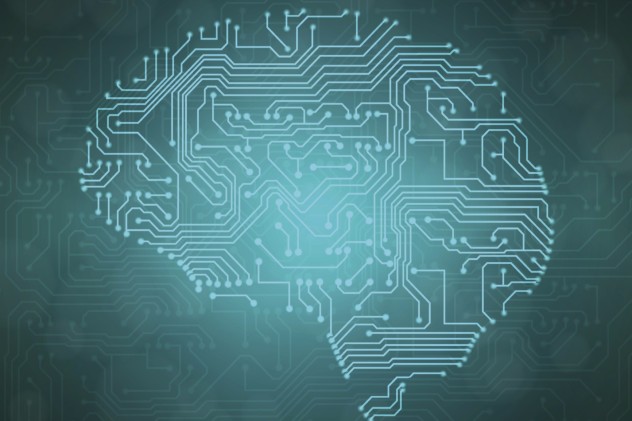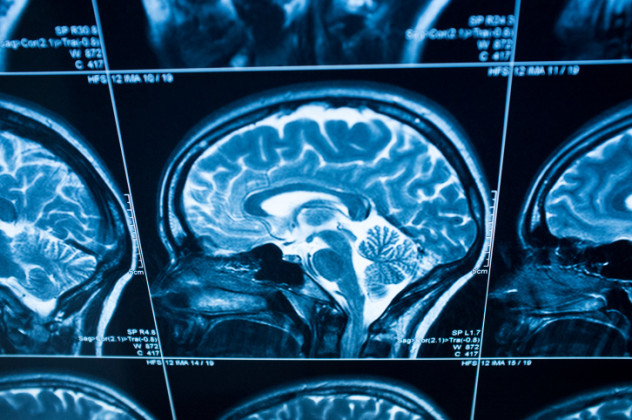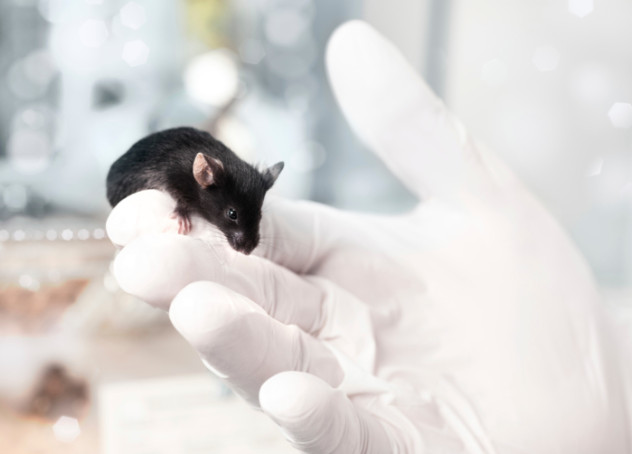 Misconceptions
Misconceptions  Misconceptions
Misconceptions  History
History 10 Amazing Roman Epitaphs
 Weird Stuff
Weird Stuff 10 Niche Subcultures That Are More Popular Than You Might Think
 Mysteries
Mysteries 10 Tragic Disappearances and Deaths in Joshua Tree National Park
 History
History 10 Ways Childhood Really Sucked in the Old West
 Music
Music 10 Name Origins of Famous Bands from the 1990s
 Religion
Religion 10 Biggest Turnarounds by the Catholic Church
 Weird Stuff
Weird Stuff 10 Unbelievable Times Laws Had Unintended Consequences
 Humans
Humans Ten Historic Women Who Deserve Way More Credit Than They Got
 Movies and TV
Movies and TV 10 Films That Spawned Major Lawsuits
 Misconceptions
Misconceptions 10 Phony Myths and Urban Legends That Just Won’t Die
 History
History 10 Amazing Roman Epitaphs
 Weird Stuff
Weird Stuff 10 Niche Subcultures That Are More Popular Than You Might Think
Who's Behind Listverse?

Jamie Frater
Head Editor
Jamie founded Listverse due to an insatiable desire to share fascinating, obscure, and bizarre facts. He has been a guest speaker on numerous national radio and television stations and is a five time published author.
More About Us Mysteries
Mysteries 10 Tragic Disappearances and Deaths in Joshua Tree National Park
 History
History 10 Ways Childhood Really Sucked in the Old West
 Music
Music 10 Name Origins of Famous Bands from the 1990s
 Religion
Religion 10 Biggest Turnarounds by the Catholic Church
 Weird Stuff
Weird Stuff 10 Unbelievable Times Laws Had Unintended Consequences
 Humans
Humans Ten Historic Women Who Deserve Way More Credit Than They Got
 Movies and TV
Movies and TV 10 Films That Spawned Major Lawsuits
10 Recent Developments In Human Health You Probably Missed
Human health is a subject that directly concerns us all. From discoveries that promise upcoming cures to thrilling new surgery techniques that give hope to the disabled, the media abounds with stories revolving around our health and bodies.
10 Scientists Identify A New Body Part

Way back in 1879, a French surgeon named Paul Segond wrote a paper that described a “pearly, resistant fibrous band” along the ligaments within the human knee. The paper was promptly forgotten until 2013, when scientists discovered the anterolateral ligament, a knee ligament that plays a part in common knee problems and injuries. The discovery, shockingly overdue considering how often the human knee is scanned and treated for injuries, was written up in the Journal of Anatomy, published online in August 2013.
The paper’s authors examined 41 unpaired cadaver knees and found the new ligament in all but one of them, concluding that the new body part was a clearly distinguishable tissue with its own well-defined structure.
Earlier that year, researchers also published in the journal Ophthalmology the discovery of another new human body part in the eye, a microscopic layer of the cornea dubbed “Dua’s Layer.”
9 A Brain-Computer Interface

Scientists working at Korea University and Germany’s Technological University have developed a new interface that will allow users to control an exoskeleton of the lower limbs. It works by decoding specific brain signals. The results were published in August 2015 in the Journal of Neural Engineering.
Users wear an electroencephalogram (EEG) cap and operate the exoskeleton by staring at one of five LEDs mounted to the interface. This causes the exoskeleton to move forward, turn left or right, and sit or stand.
So far, the system has only been tested on healthy volunteers, but the hope is that it can eventually be used to help the disabled. Paper coauthor Klaus Muller explained, “People with amyotrophic lateral sclerosis or high spinal cord injuries face difficulties communicating or using their limbs. Decoding what they intend from their brain signals could offer means to communicate and walk again.”
8 A Device That Moves Paralyzed Limbs With Mind Power
In 2010, Ian Burkhart became paralyzed when he hit a sandbar during a swimming accident and broke his neck. In 2013, thanks to the efforts of a partnership between Ohio State University and Battelle, Burkhart became the world’s first man to bypass the spinal cord and move a limb using only his thoughts.
The breakthrough came about thanks to a new kind of electronic neural bypass, a device that implants a pea-sized chip into the motor cortex of a patient’s brain. The chip interprets brain signals and sends them to a computer. The computer reinterprets the signals and sends them to a sleeve that the patient wears, which stimulates the relevant muscles into action. The whole process takes a fraction of a second.
It took some work to get to that point, however. The team behind the technology had to figure out the precise sequence of electrodes that would allow Burkhart to move his hand. Burkhart himself had to undergo months of therapy to rebuild atrophied muscles. The end result is that he can now rotate his hand, make a fist, and pinch his fingers together in order to grasp objects.
7 Bacteria That Eats Nicotine And Helps Smokers Quit

Quitting smoking is an enormously difficult task, as anyone who has tried it knows. Nearly 80 percent of those who try using drugstore cessation products fail. In 2015, researchers at the Skaggs Institute for Chemical Biology at the Scripps Research Institute found new hope in the form of a bacterial enzyme that consumes nicotine before it ever reaches the brain. The enzyme is found in the bacteria Pseudomonas putida. While the enzyme is not a new discovery, it has only recently been produced in the laboratory.
The researchers hope to use this enzyme for new smoking cessation therapies. By blocking nicotine before it reaches the brain and causes dopamine production (the chemical “reward” of the brain), they hope to be able to prevent the desire to smoke. To be viable, any therapy developed must be stable enough to work without causing additional problems. So far, the laboratory-produced enzyme has remained stable for more than three weeks in a buffer solution (and three days in a serum) and tests with lab mice produced no observable side effects.
The researchers published their test results in the August online version of the Journal of the American Chemical Society.
6 A Universal Vaccine For Influenza

Peptides are short chains of amino acids that exist on the structures of cells. They act as the basic building block of proteins. Researchers working in 2012 at the University of Southampton, University of Oxford, and Retroscreen Virology Ltd. have identified a new set of peptides found on influenza viruses that may give rise to a universal vaccine against all strains of the virus. The results were published in the journal Nature Medicine.
In the case of influenza, peptides on the external surface of the virus mutate rapidly, making them difficult for drugs or vaccines to target. The recently identified peptides exist on the internal structure of cells and mutate more slowly. What’s more, these internal structures are found in every strain of influenza, from seasonal variations to swine and avian flu. Current vaccines against influenza take about six months to develop and do not provide long-lasting immunity, but it’s conceivable that by targeting the internal peptides, a universal vaccine could be developed that provides long-lasting immunity.
Influenza is an upper respiratory viral illness that attacks the nose, throat, and lungs. It can be deadly, especially for the young, old, or already sick. Influenza strains have been responsible for several pandemics throughout history, especially the 1918 pandemic. Nobody knows for sure how many people died from the waves of illness, but some estimates put it at 30–50 million people worldwide.
5 A Possible Cure For Parkinson’s Disease

In 2014, scientists took artificial—but fully functioning—human neurons and successfully grafted them to the brains of mice. The neurons have the potential to treat or even cure diseases such as Parkinson’s disease.
The neurons are created by a research group from the Max Planck Institute, the University Hospital Munster, and the University of Bielefeld. The group created stable nerve tissue from neurons reprogrammed from skin cells. In other words, they induced neuronal stem cells, a method which improves the compatibility of the new neurons. After a full six months, the treated mice harbored no adverse side effects as the implanted neurons integrated with their brains. They demonstrated normal brain activity and the formation of new synapses.
The new technique has the potential to give neuroscientists the ability to replace diseased, damaged neurons with healthy cells, which may one day allow them to treat and cure diseases such as Parkinson’s disease, a disease that causes the neurons in the brain that supply dopamine to die off. It currently has no cure, but symptoms can be treated. It typically appears in people between the ages of 50 and 60 and causes rigid muscles, changes in speech and gait, and tremors.
4 The World’s First Approved Bionic Eye
Retinitis pigmentosa is the most common of a group of inherited progressive retinal disorders that leads to loss of vision and often complete blindness. Early symptoms include a loss of night vision and increased difficulty seeing in peripheral vision.
In 2013, the Argus II Retinal Prosthesis System was introduced, the world’s first bionic eye approved by the Food and Drug Administration, specifically designed to treat late-stage retinitis pigmentosa. The Argus II system comprises a pair of external glasses outfitted with a camera. Video images are converted into electrical pulses that are sent to an array of electrodes implanted on the patient’s retinas. These images are then perceived as patterns of light in the brain. The patient is taught to interpret these patterns, thus regaining some measure of visual perception.
According to their website, the Argus II is currently available in the United States and Canada, and there are plans to introduce it worldwide.
3 A Painkiller That Only Uses Light

Severe pain has traditionally been treated with opioid drugs. The drawback is that such drugs can be addictive and have a strong potential for abuse, which comes with intense withdrawal symptoms. So what if scientists could stop pain using nothing but the power of light?
In April 2015, neuroscientists at the Washington University School of Medicine in St. Louis announced that they had done just that. By melding a light-sensitive protein to opioid receptors in a test tube, they were able to activate opioid receptors in the same way that opiate drugs do but using light. Their findings were published online in the journal Neuron.
The hope is that researchers will be able to develop ways to utilize light for pain relief with drugs that have fewer side effects. According to study author Edward R. Siuda, it is even conceivable that after more research, light could replace drugs altogether.
To test the new receptor, an LED light about the size of a human hair was implanted into the reward center of the brains of mice that were then injected with the receptor. The mice were placed in a lit chamber that stimulated the release of dopamine by way of the receptors. If the mice left a certain area, the light turned off and the stimulation stopped. The mice quickly returned to the original area.
2 An Artificial Ribosome
A ribosome is a molecular machine composed of two subunits that use amino acids inside cells to build proteins in a process known as translation. Each of the ribosome’s subunits is synthesized within a cell’s nucleus and then exported to the cytoplasm.
In 2015, researchers Alexander Mankin (director of the University of Illinois College of Pharmacy’s Center for Biomolecular Sciences) and Northwestern University’s Michael Jewett (assistant professor of chemical and biological engineering) succeeded in building the world’s first artificial ribosome that promises to reveal new insights into how these molecular machines work. It may also provide the basis for future drugs and biological materials. Their findings appeared in the July online edition of the prestigious journal Science.
According to that paper, the artificial ribosome—called “Ribo-T”—remained functional when introduced into E. coli cells, even in the absence of “wild” ribosomes, keeping the bacteria alive and even demonstrating the ability to evolve.
Unlike ordinary ribosomes, the subunits of Ribo-T will not separate—standard behavior in ribosomes that until now were assumed to be a necessary part of protein synthesis. Ribo-T is already teaching us new things about how ribosomes work. “Our new protein-making factory holds promise to expand the genetic code in a unique and transformative way, providing exciting opportunities for synthetic biology and biomolecular engineering,” said Michael Jewett of the research.
1 A Bilateral Hand Transplant
The Children’s Hospital of Philadelphia along with doctors at Penn Medicine made history in 2015 when they successfully transplanted two donor hands and forearms onto eight-year-old recipient Zion Harvey. Harvey had faced a kidney transplant and double amputation after he suffered a severe infection at the age of two.
Initially referred to the Shriners Hospital for Children, Harvey was evaluated through a joint effort between the two institutions as a candidate. The donor limbs were procured through the Gift of Life Donor Program, a nonprofit organization that operates in the eastern half of Pennsylvania, southern New Jersey, and Delaware.
The surgical team attached the bones, blood vessels, nerves, and tendons of the hands in a complex, 10-hour procedure in July, making Harvey the world’s first child recipient of a bilateral hand transplant. He currently needs a series of daily immunosuppressant medications and undergoes physical therapy in order to regain as much functionality as possible. As with other transplant recipients, Harvey will remain on this regimen of drugs and therapy for the rest of his life in order to minimize the chance of his body rejecting the donor tissue.
Lance LeClaire is a freelance artist and writer. He writes on subjects ranging from science and skepticism, atheism, religious history and issues, unexplained mysteries, and historical oddities—among other subjects. You can look him up on Facebook or keep an eye for his articles here on Listverse.








